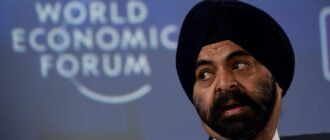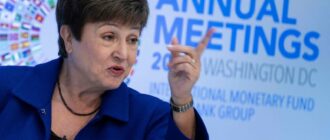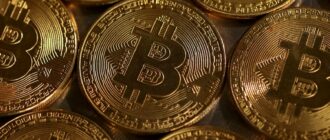



.
The Central Bank of the UAE (CBUAE) raised the Base Rate applicable to the Overnight Deposit Facility (ODF) by 25 basis points, effective Thursday. The decision was taken following the US Federal Reserve Board’s announcement to increase the Interest on Reserve Balances (IORB) by 25 basis points.
In this explainer, Arun Leslie John, Chief Market Analyst, Century Financial, explains what the hike means for residents and how it will affect mortgage rates, rents, retail and vehicle purchases.
1.Will mortgage rates go up?
The Fed rate hike will be reflected on all loans and mortgages. The upcoming mortgage rate increases will be coming on top of the steady rise in property prices in UAE, which would make it even more expensive for an end-user to get into the market now. Property prices in the more popular residential locations have been trending higher, and the pace of increase has picked up. Since the rate hikes have just begun, home buyers would opt for taking out a mortgage at fixed rate at least in the initial year or two to be less affected by gradual rate increases.
2. Will rents go up?
The upward trend in UAE rents will continue in 2022, which began with the market’s recovery after the Covid-19 pandemic last year. Additionally, as the cost of buying a property will now increase on account of higher mortgage rate; homeowners will likely pass on this high cost to its tenants via charging higher rents.
3. How will this affect vehicle purchases?
As for interest on car loans – they are expected to rise, too. However, the interest rates a borrower will pay, relies on multiple other factors, primarily, such as, their credit history, the type of vehicle, the loan term and down payment. A quarter basis point hike will not deter consumers from borrowing less as it will not have a significant impact on their interest payments; however gradual hikes this year will lower consumers’ willingness to borrow at the then high interest rates.
4. How about retail purchases?
Consumers will opt for spending less, as many consumers in UAE spend using credit cards, and credit card debt is especially susceptible to climbing interest rates. So, rate hikes from the central banks will result in consumers eventually paying more. Investors will now put extra money into savings as rate hikes serve as an incentive to boost their savings or emergency fund contributions.
5. How will this impact cost of living?
The Fed is finally moving away from zero interest rates to tame surging inflation. Consumers will experience this policy shift through higher borrowing costs: making it expensive to take out mortgages or car loans. And cash sitting in bank accounts will finally earn a slightly high rate, albeit not much. With gradual rate hikes, inflation will come under Fed’s required bracket indicating the surging prices will come under control reducing the cost of living eventually.
6. What will be the repercussions on businesses operating in the UAE?
The rate hikes will have an impact on both businesses and residents alike by sparking a spurt in the borrowing costs across the financial sector, including auto, mortgage and personnel loans. In the tourism sector, the impact of the rate hike will be felt through a strong dirham that may make UAE expensive to holidaymakers, especially those from nations of weaker. Additionally, higher loan charges could pressure small and midsize enterprises (SMEs) that are still healing from the impact of the COVID-19 pandemic.
On the flip side, the net profitability of large banks in the UAE will be driven by growth in net interest income during the next 12-18 months on the back of an expected interest rate hike and strong business momentum.
7. What will be the ripple effect of US rate hikes across the world?
By increasing its benchmark rate, a quarter of a point on Wednesday, the Federal Reserve is trying to rein in inflation, which is at a 40-year high. The mechanics are relatively straightforward: By raising its federal funds’ rate — the rate banks charge one another for overnight loans — the Fed sets off a domino effect. Whether directly or indirectly, several borrowing costs for consumers go up. In theory, this slows demand for goods and taps the brakes on inflation.
Historically, rising interest rates have gone together with an appreciating US dollar. This, in turn, affects economic facets domestically and around the world—particularly the credit market, commodities, stocks, and investment opportunities. As a result, dollar-denominated debt owed by developing nations increases. The stronger dollar will also boost the demand for imported goods, thus increasing global exports.
The increase in rates across developed countries will spillover to developing and merging nations, and finally to the pockets of residents. Higher interest rates, in theory, mean people receive a better return on their savings, which should encourage them to save rather than spend. Moreover, lending rates will rise too, denting the borrowers.










